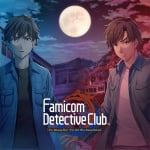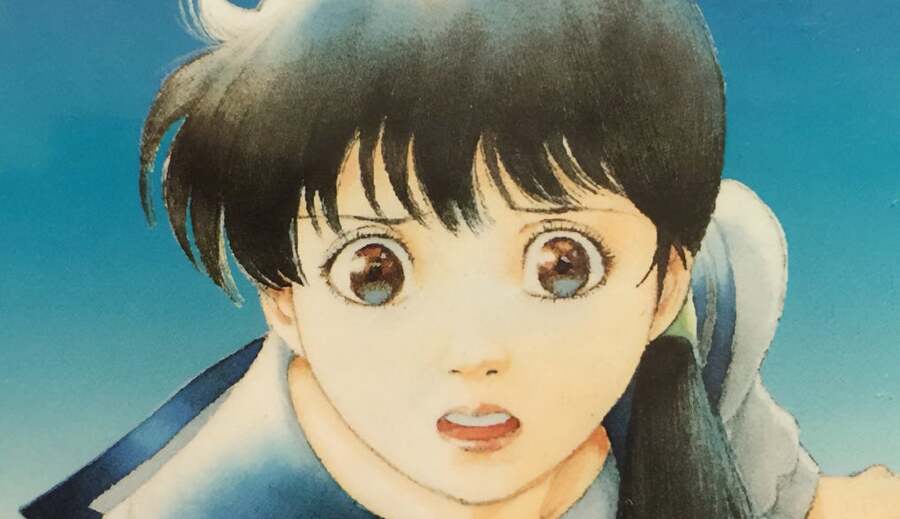
When Nintendo announced back in 2019 that it was releasing a pair of remakes of the Famicom Detective Club games The Missing Heir and The Girl Who Stands Behind — and better yet that they were being published internationally — it initially came as a bit of a shock.
The series, which had originally debuted on the Famicom Disk System back in 1988, had up until that point never received an official English localization, with only a few diehard fans outside of Japan having had some experience with the mystery titles thanks to the 2004 fan translation of the 1998 SNES remake of The Girl Who Stands Behind. As a result, they weren't exactly a prime contender for undergoing the remake treatment, lacking the name recognition of, say, a Zelda, Mario, or Fire Emblem game.
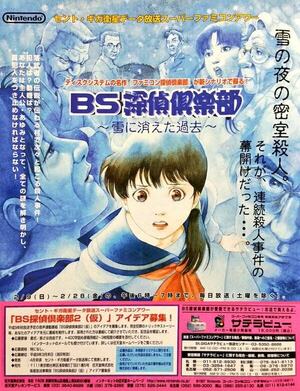
Nevertheless, in May 2021, Nintendo, in collaboration with the Steins;Gate developer Mages, went ahead with releasing newly-updated versions of the first two games worldwide, allowing Western players to finally experience this obscure piece of Nintendo history for themselves on the Nintendo Switch. This won the series a bunch of new supporters. But what many of them probably don't realize is that there is actually an oft-forgotten third game in the Detective Club series, called BS Detective Club: Yuki ni Kieta Kako (or “BS Detective Club: The Past That Disappeared in the Snow”), that has still yet to be localized.
BS Detective Club: Yuki ni Kieta Kako was a game that was broadcast in three parts for the Nintendo Satellaview — the Super Famicom’s Japanese-exclusive satellite modem add-on — throughout 1997 and follows the adventures of the supporting character from the first two Famicom Detective Club games, Ayumi Tachibana, as she travels back to her parents’ village for a vacation, only to find her mother accused of murder. It was produced by the Famicom Detective Club creator Yoshio Sakamoto, and directed by Masayasu Nakata (who also worked on the puzzle platformer Sutte Hakkun).
Back in 2021, after we finished playing through the remakes of The Missing Heir and The Girl Who Stands Behind on Switch, we took a closer look at this last unlocalized entry in the series, speaking to various Satellaview preservationists to find out more about it and explain why it could also potentially benefit from the remake treatment. Sadly, that article is no longer online, with the original publisher Fanbyte removing the piece as part of "an SEO cull" as it made the switch to becoming a guides-centric site. So now we're back again with an updated article, incorporating more of what we've learned over the past few years, including a slightly more detailed account of the game's story.
Before we discuss this obscure sequel, we should probably give you a quick explanation of what the Satellaview actually is, in case you haven't come across it yet. We won't go too much into detail here, as we already have quite an extensive feature on the Satellaview available on the site, but we'll just go over some of the basics again.
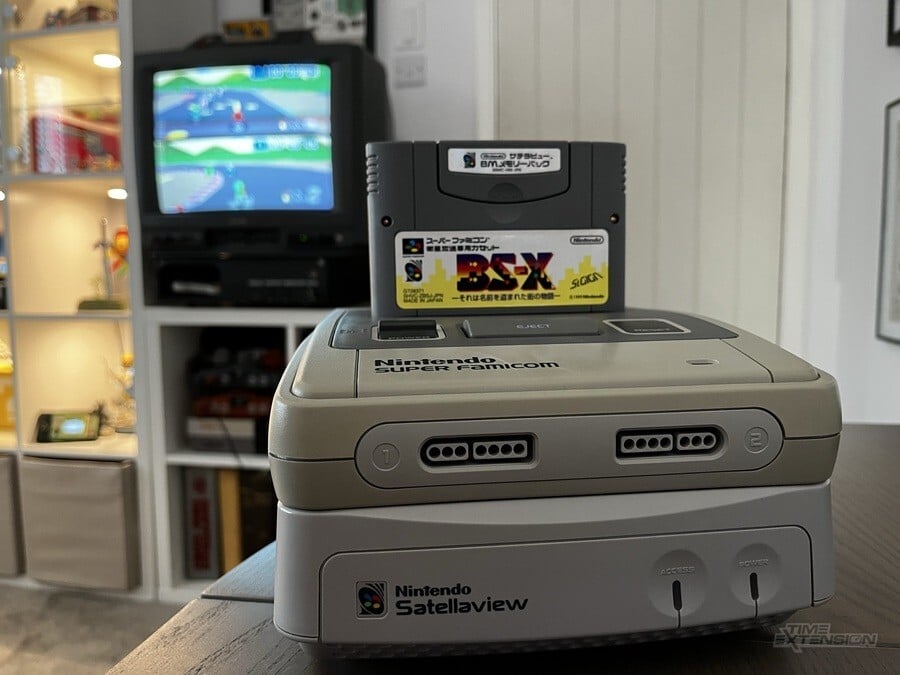
In 1993, Nintendo acquired a large stake in St. Giga, a Japanese Satellite radio company that was primarily known at the time for its unusual broadcasts that were based on the tidal charts and the time of day. The broadcaster at the time had been struggling to attract subscribers and was reporting losses, so Nintendo dispatched a management team to try and reverse its fortunes and came up with an idea for an innovative new collaboration that would take advantage of its Super Famicom — a satellite modem peripheral called the Satellaview.
This add-on was released in Japan in 1995 and could be attached to the bottom of the console to expand its available memory with an extra 1 MB of ROM space and an added 512 kB of RAM. Players could use it to receive games and other media via a BS Tuner and antennae, with the cost of the service being limited to the price of the hardware. This data was then stored on rewritable 8m memory paks that slotted into a special cartridge, called BS-X: Sore wa Namae o Nusumareta Machi no Monogatari (or “BS-X: The Town Whose Name Was Stolen”), which served as something of an interactive menu of sorts as well as a light RPG-style experience with its own story that was scheduled to unfold over time.
Over the five or so years that the Satellaview service was around, Nintendo and various third-party companies all broadcasted games for the add-on, with these being divided into two main categories: Soundlink and non-Soundlink titles. Soundlink games were distinguished from regular broadcasts as they benefitted from streaming PCM audio (often including professional voice acting). They were also broadcast live, with players having to arrange their schedule around particular time slots that were advertised in magazines and online to enjoy the full experience.
The first Soundlink game that Nintendo and St. Giga broadcasted was Zelda no Densetsu, a reimagining of the original Legend of Zelda where the BS-X protagonist replaced Link as the playable protagonist and where the dungeons and world map had all been altered. This was originally aired throughout August 1995 and received a second remixed map in January 1996. Other Soundlink games inevitably followed, with Nintendo announcing publicly on its website in 1997 that it was going to broadcast a follow-up to the Famicom Detective Club game The Girl Who Stands Behind across three one-hour Soundlink broadcasts.
BS Detective Club: Yuki ni Kieta Kako, as the follow-up is called, takes place one year after the events of the last game, The Girl Who Stands Behind, and starts with Ayumi Tachibana writing a letter to an unnamed person about an incident that happened in the past. The story then flashes back to a trip Ayumi took to her home village sometime in the past to visit her ill mother Toshie and her family friend Reiko.
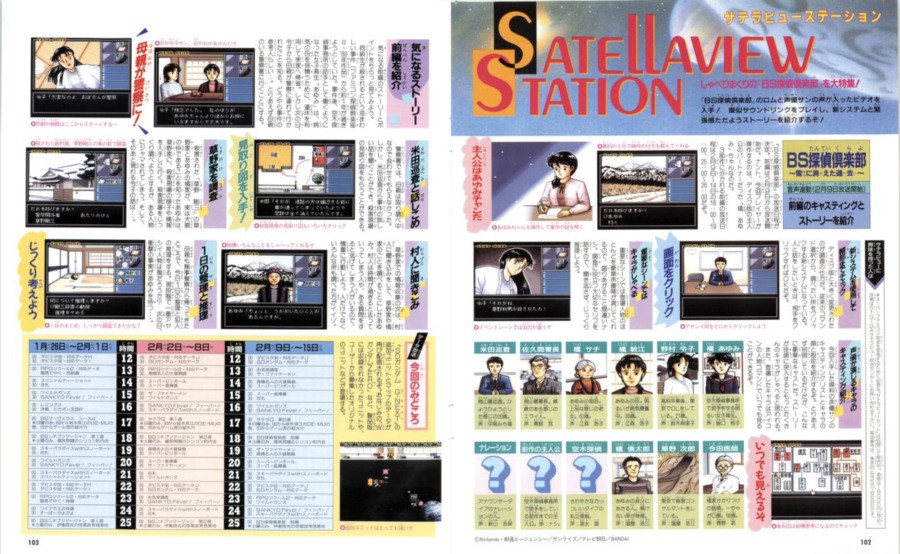
After a short catch-up at a dinner table where we get to learn more about each of the characters, Ayumi goes off to bed and is suddenly awoken to find that the former mayor Gozo Kasuno has been murdered and that her mother has been taken in for questioning due to being the person that found the body. From there, it then falls to the young detective to piece together the truth behind these strange events, with the investigation revealing some shocking revelations about her own family history and another murder that took place 18 years in the past.
Notably, the game was the first in the Famicom Detective Club series to receive voice acting. As a result, Nintendo and St. Giga cast the actress Yuko Minaguchi in the role of Ayumi Tachibana (she later reprised her part in the remakes). At the time, Minaguchi was probably best known for her roles as Videl in Dragon Ball Z and Sailor Saturn in Sailor Moon S, and had also played the lead in shows like Bosco Adventure and Yawara!
As mentioned, each part was scheduled to be played over the course of an hour, with a timer in the top left corner indicating to the player how much time had elapsed since the broadcast had started. How everything worked with this 1-hour limit imposed was that the developers split the gameplay between auto-play sections with voiceover and moments where the player could freely examine their surroundings (similar to in previous games albeit with a more limited set of commands). Players would have a small amount of time to question witnesses and investigate a scene, with the game eventually skipping them ahead to stay in sync with the live satellite feed.
What this means is that you can actually miss important clues or plot threads and still finish the game, with the only difference being that the PCM audio will be switched off in certain places and scenes will undergo some slight changes. To give you an idea of how much you missed, the game gives you a percentage upon completing each broadcast, with the top 30 players being gifted BS Famicom Club-branded telephone cards that could be used on Japanese payphones.
The first part of BS Detective Club (or "Zenpen" as it is known) would initially air on February 9, 1997, at 18:00-19:00 JST, with a rerun happening in the early hours of February 10th, at 1:00 am - 2:00 am and over the next few days. It was followed by broadcasts of the second part ("Chuuhen") between February 16th to February 21st and the third part ("Kouhen") between February 23rd to February 28th. Following its original release, the game was also reported to have been rebroadcasted in 1997 and 1998, with Nintendo and St. Giga openly soliciting ideas for the unrealized sequel BS Detective Club 2 in its magazine advertisements.
ROMs of all three parts have been floating around online for decades now, but there are currently two main obstacles facing players. The first is the language barrier. As mentioned, the Satellaview was never released outside of Japan, so the in-game text is entirely in Japanese. Then there's the issue of the dumps not containing the PCM audio/voice acting as this data was never stored on the memory pak but streamed straight to the console/accessory. Because of this, the hope among those who have heard about the game is that one day someone might be able to translate it and find clean enough recordings to reconstruct a facsimile of the original experience.
Cabbusses is one of these individuals who has been on a quest to find cleaner recordings of the BS Detective Club broadcasts. He has spent more than a decade tracking down information and footage of various Satellaview games, documenting the results on YouTube and his blog.
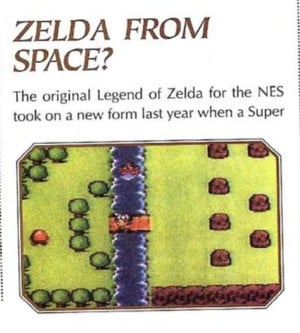
He first heard about the Satellaview as a kid, after stumbling across an article titled “Zelda from Space?” in Vol. 94 of Nintendo Power. However, it wasn’t until years later when he happened across the BS Zelda project — a website providing info and patches to better emulate the BS Zelda games — that he realized what the original Nintendo Power article had been referring to, and started trying to uncover more about the Satellaview’s strange catalog of games for himself. That includes BS Detective Club: Yuki ni Kieta Kako.
“When I saw videos of [BS Detective Club], it was exciting in part because it was the first time I was even seeing the game, period,” he continued. “Though I have to say it took time for the art style to grow on me, with [the Famicom Detective Club Part II remake for SNES] fresh on my mind. While most of the videos I found back then were on NicoNico, BS Tantei Club also had some [higher quality] video recovered from a now-defunct DivX video site called Stage6."
Cabbusses has since reposted as much of this footage as he could on YouTube for Western players to enjoy, but the search for better audio is still in progress. Back in 2021, he told us that a Japanese YouTuber named Mikarin had uploaded some clean footage of the game but had asked for 1000 subscribers to continue these uploads. Cabbusses tried to raise interest in this but struggled to increase their sub count, and eventually, Mikarin's channel disappeared — presumably due to a copyright claim on one of their uploads — bringing things to a disappointing dead end.
In regards to the possibility of the game receiving an English translation — official or otherwise — in our opinion, it doesn't seem likely — at least for the time being. The Satellaview preservationist LuigiBlood told us back in 2021 that he had briefly looked into the game's files in the past and that the title could potentially support English fonts, meaning that it might be easier than expected to develop a patch. But despite that, we've never come across any active fan efforts to translate the game, with the only unofficial project we've encountered being a Japanese Famicom demake of BS Detective Club, which hasn't had an update in years.
Meanwhile, the Mages producer Makoto Asada seemed to suggest in an interview back in 2020 (as translated by Nintendo Everything) that if that studio were to continue the series officially, it would be more interested in developing a totally original story over remaking BS Detective Club:
"Our goal for the project was to create the pinnacle of 2D text adventure games, so we actually used development techniques originally planned for other games as well. Thanks to Nintendo and their development team, we made the best game we possibly could, but looking back, we were quite reckless. How will we ever make something this good again? (laughs) We developed a fair amount of know-how working on the game, expertise I’d like to one day use on a new Famicom Detective Club [...]”
On July 17th, 2024, a new game in the series Emio - The Smiling Man: Famicom Detective Club was announced by Nintendo for Nintendo Switch, focusing on an original story. No mention was made of BS Detective Club in the marketing, with Nintendo introducing the project as "the first new entry in the series in over 30 years".
As things currently stand, BS Detective Club is in a bit of a depressing limbo. Like many other Satellaview games, Nintendo is reluctant to acknowledge this obscure part of its history or publicly support efforts to make materials relating to it more widely available. Because of this, it seems unlikely that it will ever get the same treatment as its predecessors, with it now falling to the hard work of online volunteers to make sure the game is recorded, shared, and enjoyed in the future.


